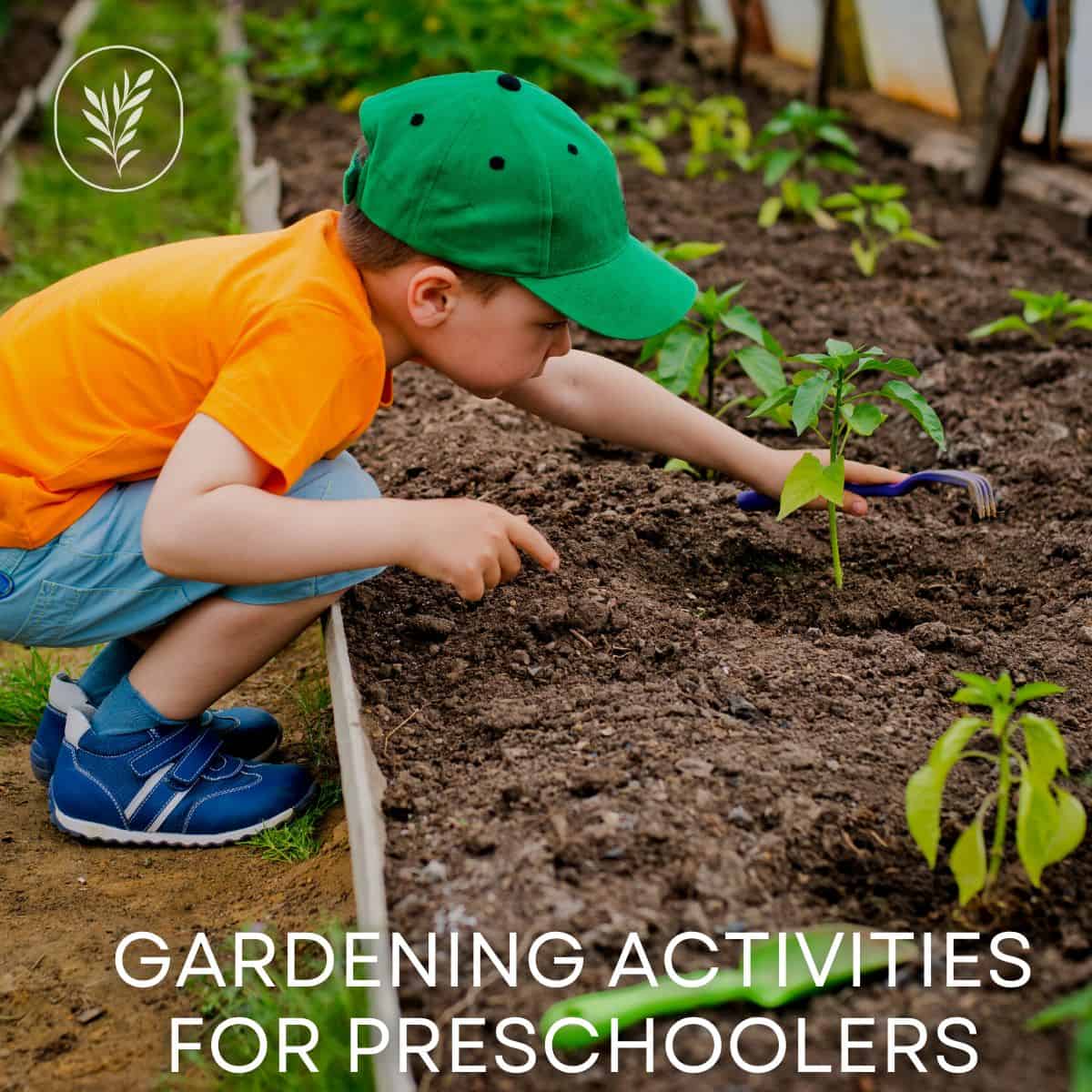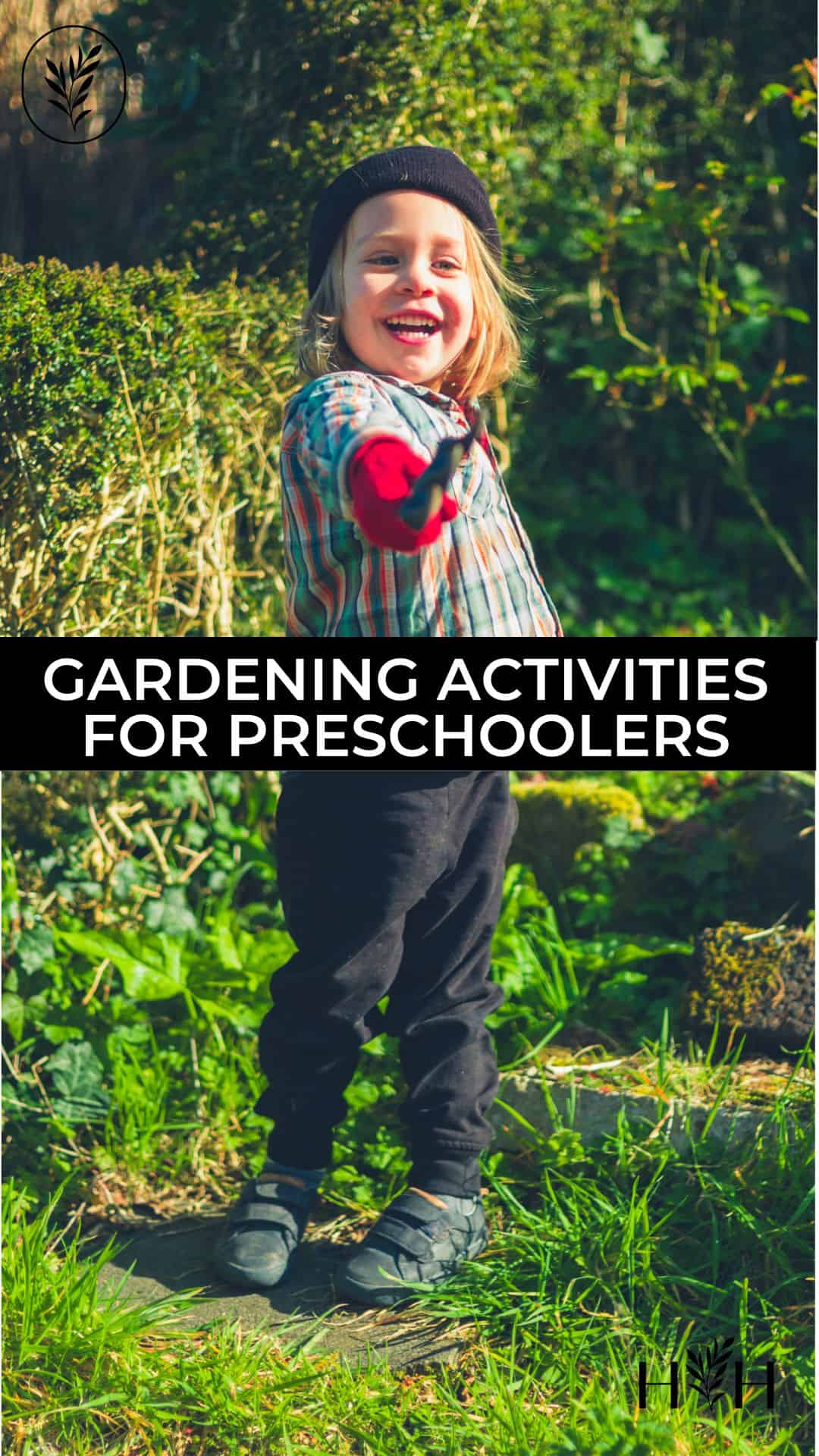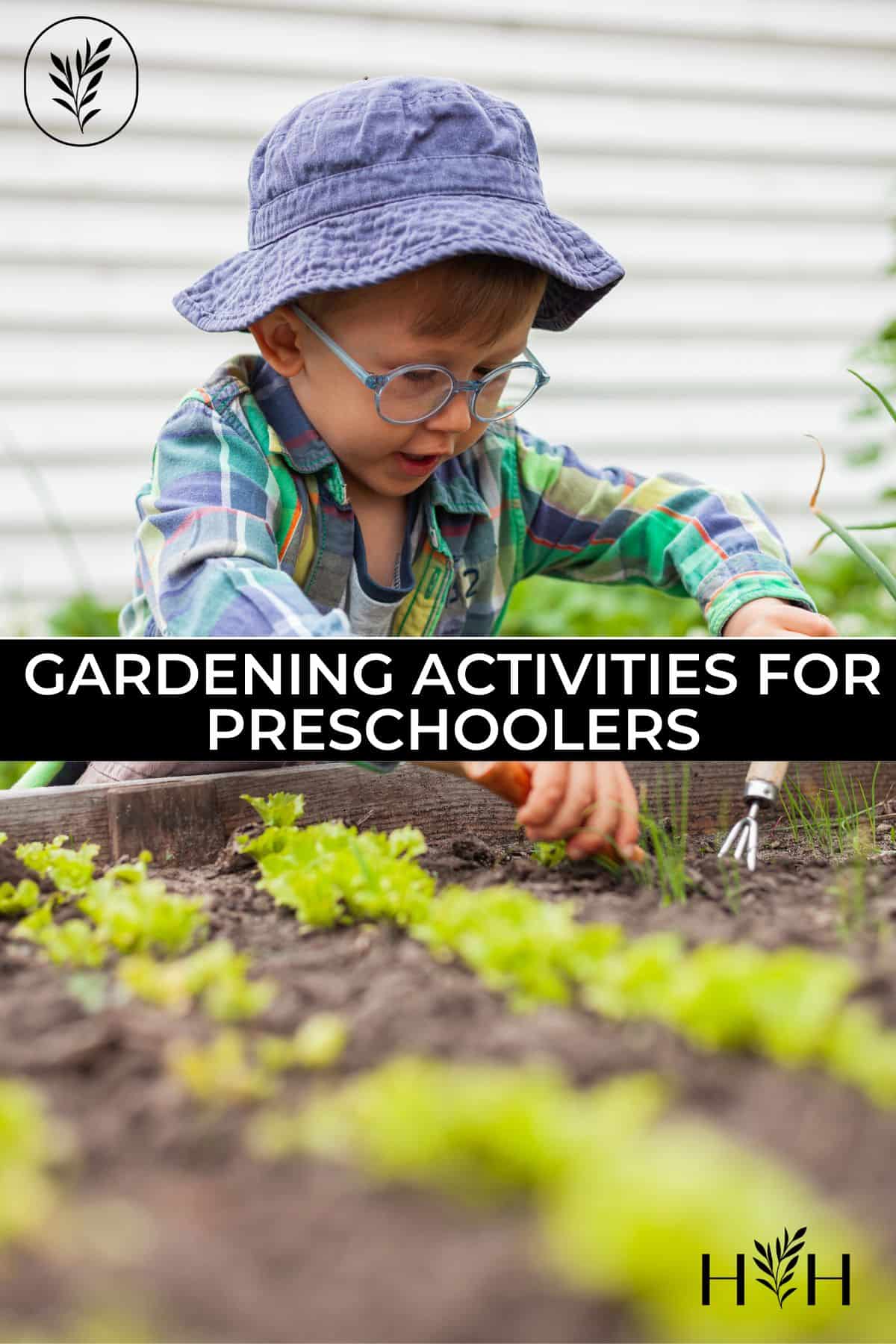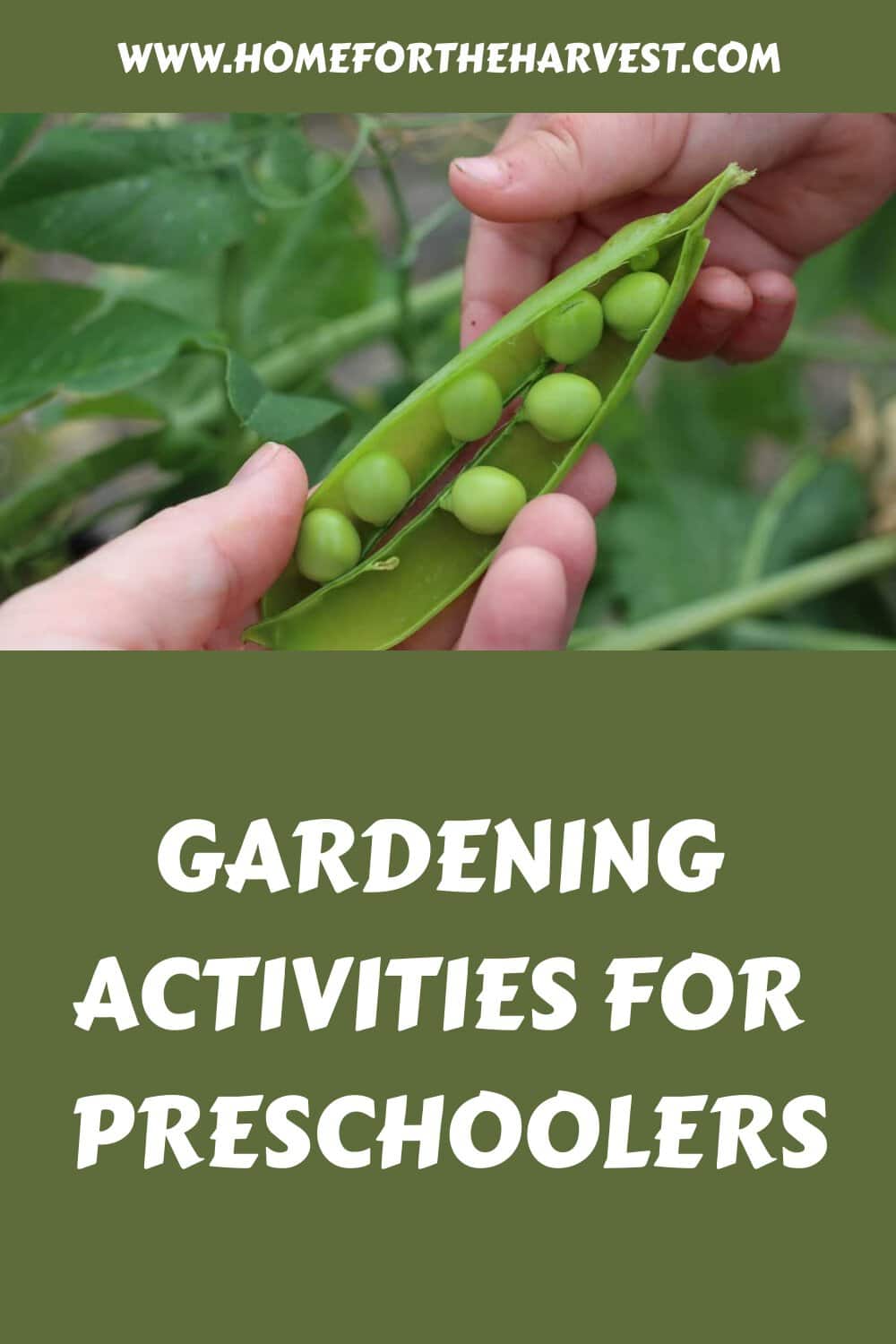Calling all parents and preschool teachers! It’s time for this year’s preschool garden theme for your little learners. Wondering how to introduce your toddlers to the garden? Here are 8 simple yet meaningful gardening activities for preschoolers that you can share with your toddlers as a parent or early childhood teacher.
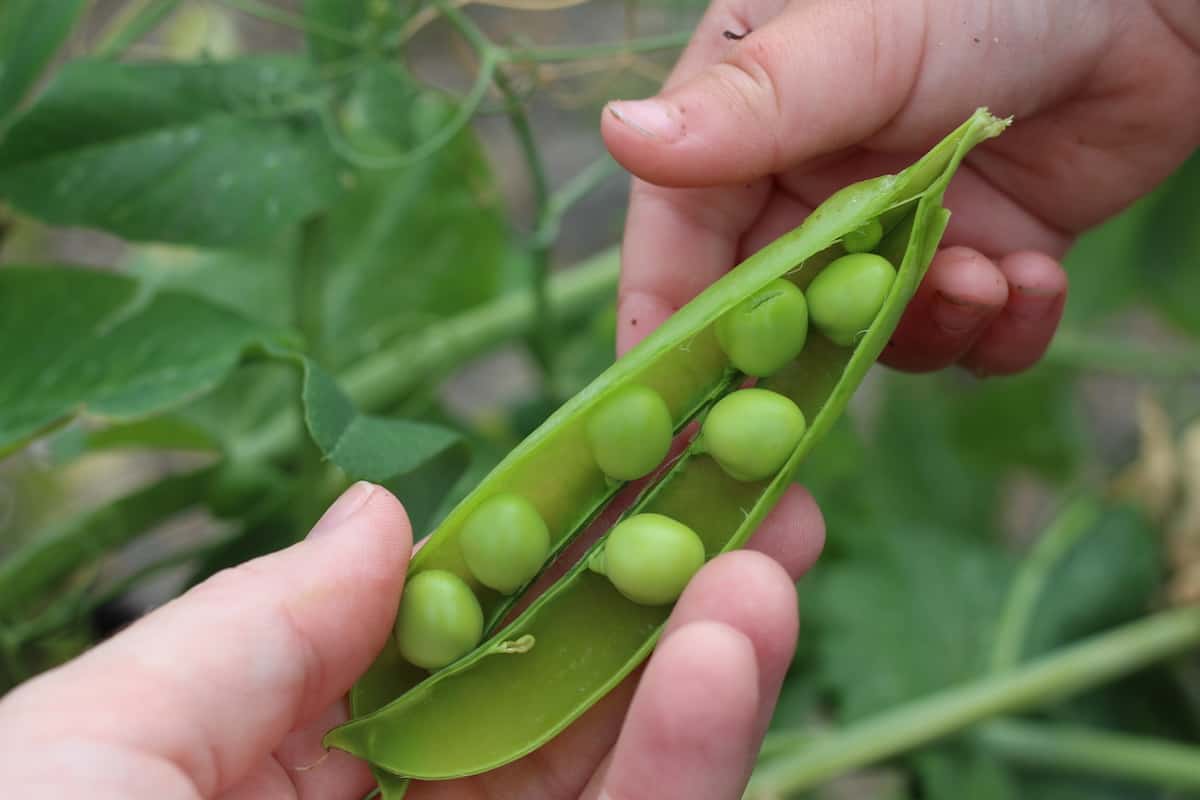
1. Grow seeds into vegetables
Perhaps the most important gardening activity for preschoolers is the lesson that seeds grow into plants. Different seeds grow into different plants, and some seeds even grow into the full-size vegetables we see at the grocery store and farmer’s market! Very cool.
Here are some vegetable seeds that are big enough for preschoolers to grasp with their fingers and plant themselves:
- Sunflower
- Corn
- Beans
- Peas
- Zucchini
- Pumpkin
Here are some more great plants for a preschool garden (but the kids will need a little more help with these small seeds):
- Lettuce
- Carrots
- Radish
- Cherry Tomatoes
- Bell Peppers
- Spinach
“Three- and four-year-old children are just beginning to understand the concept of being a “self” rather than just an attachment to a parent. Most have tiny hands that have not quite grasped the fine motor skills needed to plant little seeds or to draw perfect spacing in the squares.”
Square Foot Gardening With Kids, by Mel Bartholomew
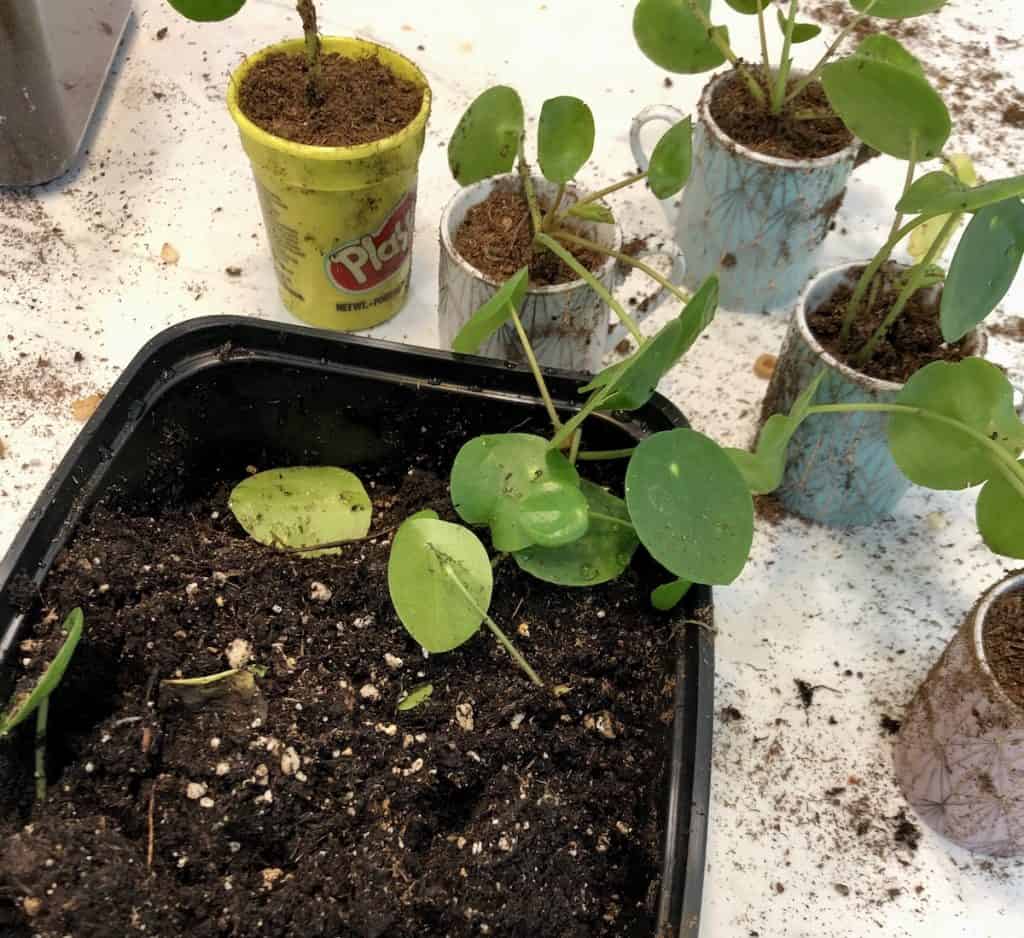
2. Recycle containers into planters
Gardening is a wonderful opportunity to model reduce/reuse/recycle and to discuss the life cycle of materials in our natural world. Making recycled planters is one way to show kids that their waste doesn’t have to go into the bin.
Most old containers can be used as a planter, provided they are safe, clean, and preferably have some type of drainage for extra water to drip out. Planters can then be used for other gardening or preschool activities your toddlers do during a garden theme learning period.
Here are some items you could use for making recycled planters with your toddlers: natural beach living natural beach living natural beach living
- Empty Containers of Snacks, Play-Doh, Toys, and Packaging
- Old Cups, Mugs, and Bowls
- Eggshells, Egg Cartons
- Rubber Boots, Old Shoes
- Lego Blocks, Duplo
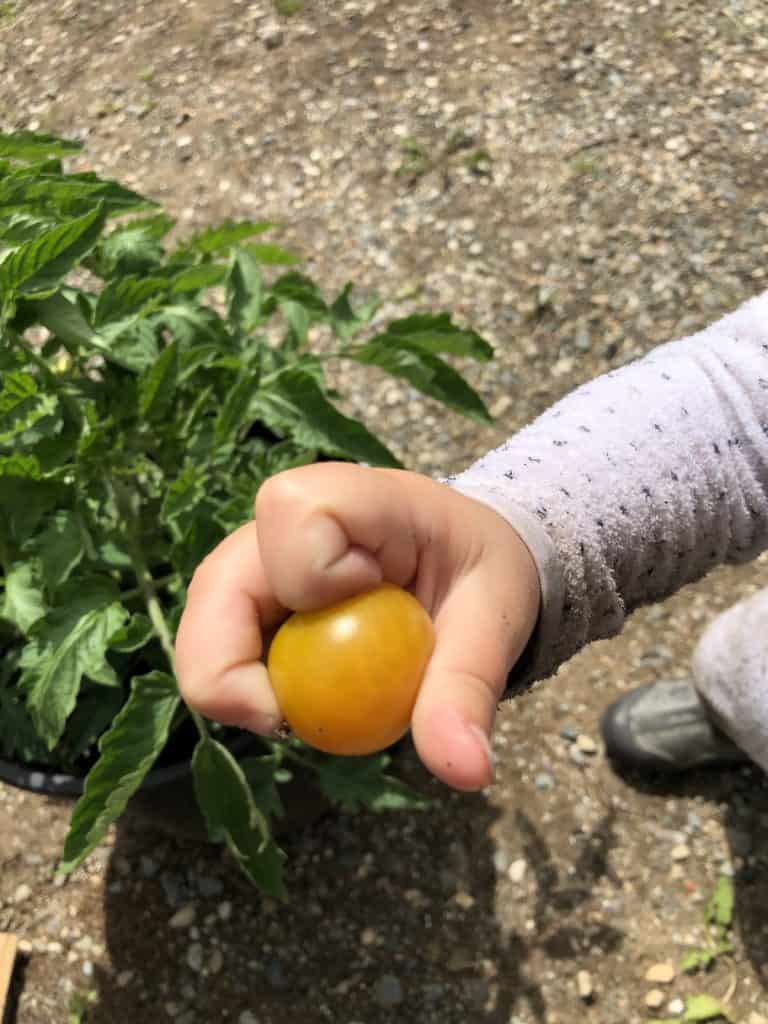
3. Compost food scraps & leaves
Speaking of learning about recycling and material life cycles, gardening is a natural introduction to composting. Your young gardeners can recycle food scraps into a compost heap or tumbler and then use the finished compost as organic mulch on the garden. Composting activities within a garden theme for preschoolers is a win-win for everyone!
Further Reading: Easy Guide to Composting
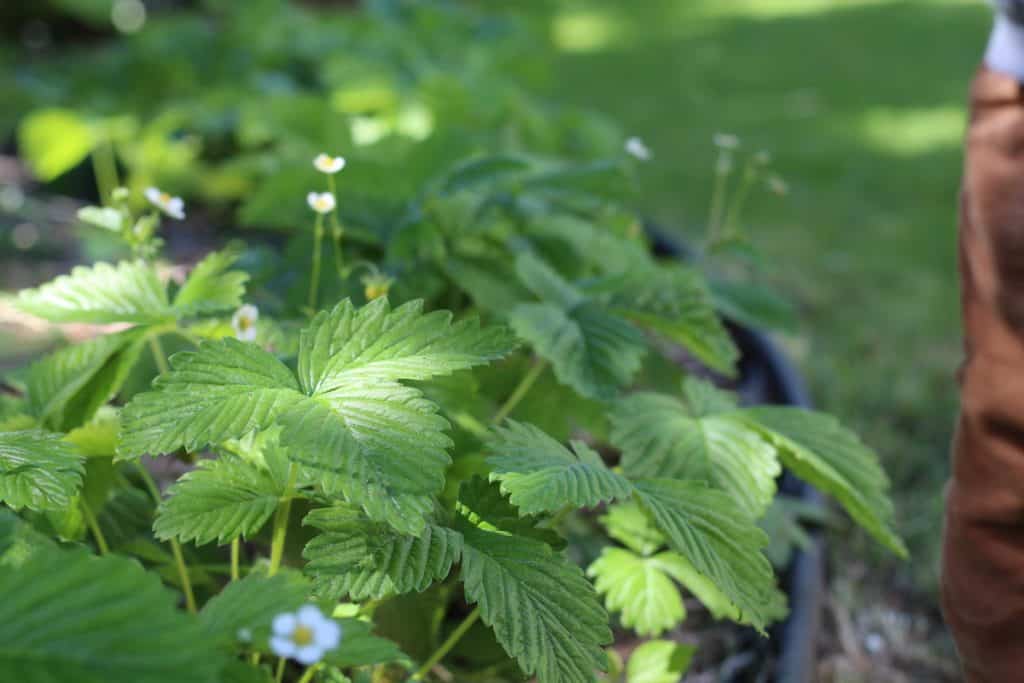
4. Learn how plants need sunlight
Plants need sunlight to create the energy they use to grow and thrive. Let your toddlers see how the sunlight shines on leaves and how the sun is good for plants. Strawberries are great for this, as shown in the photo above. They’re perennial (surviving from one year to the next), and are hardy enough to withstand kids walking all over them. If you have room, you can even add a few blueberry bushes.
Another great project is growing sunflowers. Get some giant sunflower seeds such as seeds for Mammoth Sunflowers. Plant some of the seeds in an area that receives at least 6-8 hours of direct sunlight each day. Plant the rest of the seeds in a shady spot out of direct sunlight. Let your children observe the plants grow throughout the season and note the differences they see.
Further Reading: How Plants Get Energy from Sunlight (Intro to Photosynthesis)
Discuss with your preschoolers how plants can use the sun as “food” to make their own energy (see the link above for ideas about how to explain this). Show them how there is more sun outside than inside. That’s why most of us aren’t growing cobs of corn in our kitchens! This is also an excellent opportunity to point out phenomena like shadows and shade in general. Sunlight is amazing!
“Blueberries are the perfect kid fruit – easy to pick, with no threatening thorns or prickly canes, and the handfuls of tart-sweet fruit are delicious. Of course, kids shouldn’t have all the fun. If you have a sunny corner of your garden, tuck in a blueberry bush – you won’t regret it.”
Growing Berries and Fruit Trees in the Pacific Northwest: How to Grow Abundant, Organic Fruit in Your Backyard, by Tara Austen Weaver
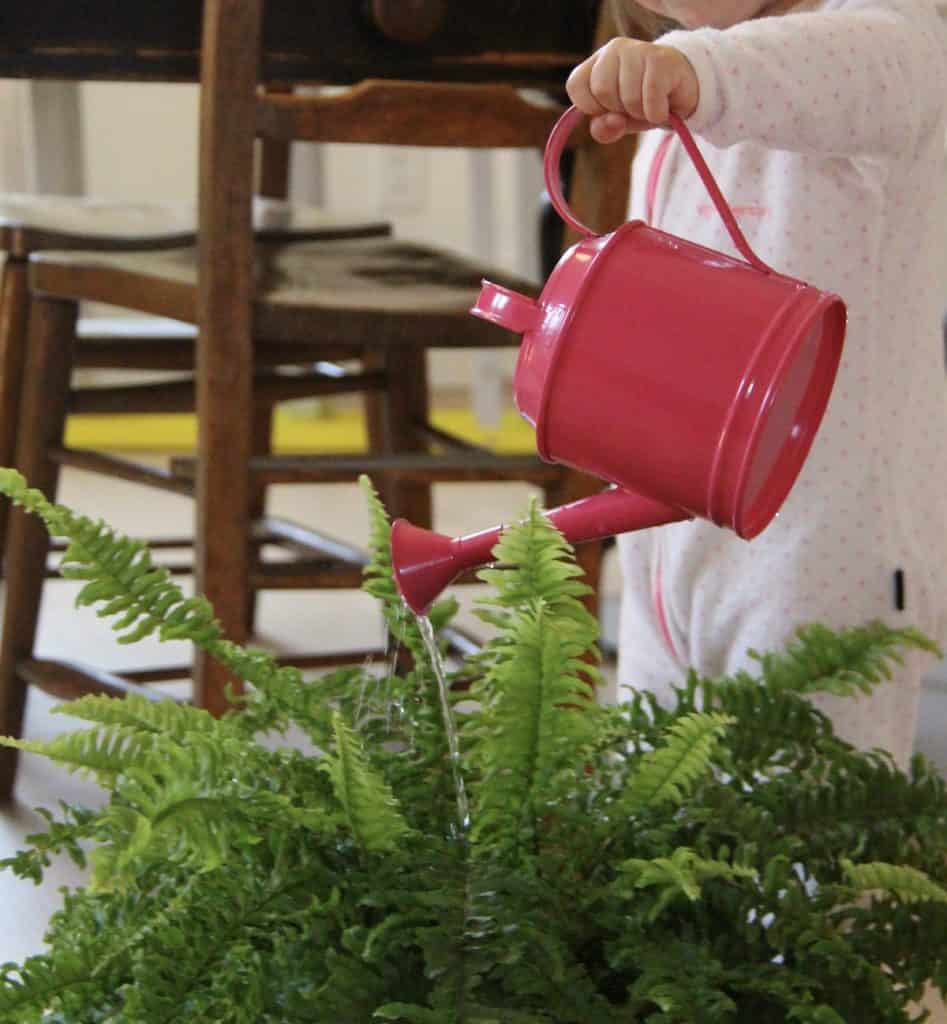
5. Learn how plants need water
Plants also need water to survive and thrive. There are lots of reasons that plants need water. Here is a quick explanation of the different reasons that plants need water to live. Any intro to gardening activities for preschoolers should include a basic explanation of the importance of water to plants and other living things.
Have your toddlers observe plants that have dried out a bit and gone slightly limp can be revived when given some water. Have your preschoolers help to water indoor plants on a regular basis, as well as an outdoor garden if possible. They’ll love taking care of their plant babies!
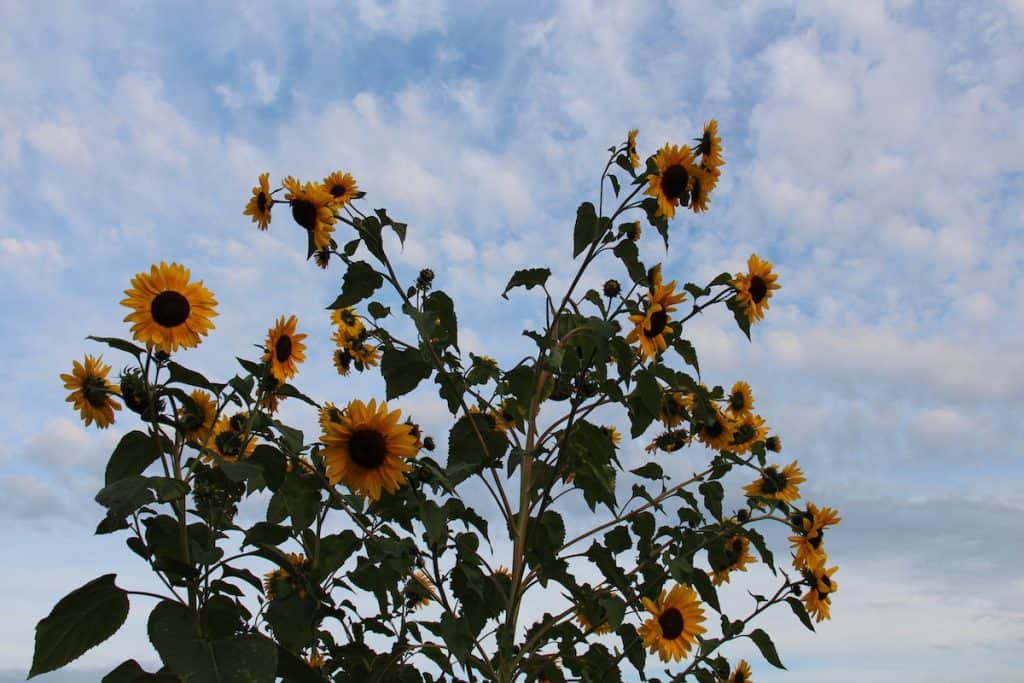
6. Grow & measure giant plants
Very few things are as magical for kids in the garden as growing your own giant plants! Some types of plants grow very quickly and can be an absolute pleasure to grow with preschoolers. This may just be the favorite gardening activity for your little ones!
Here are some giant plants you can grow in a few months:
- Giant Sunflowers
- Corn
- Globe Allium Flowers
- Giant Grass (Miscanthus × giganteus) grass seed
Note the days to maturity on the seed packet (or plant tag) and make a calendar to count down the days until the plants are full-grown. Measure the plants on a regular basis with a tape measure, yardstick, or simply by standing next to them. Over time, children will start to recognize numbers on the measuring tape and take pride in observing their plants grow. Who knew gardening could be so wonderful for learning numerical skills!?
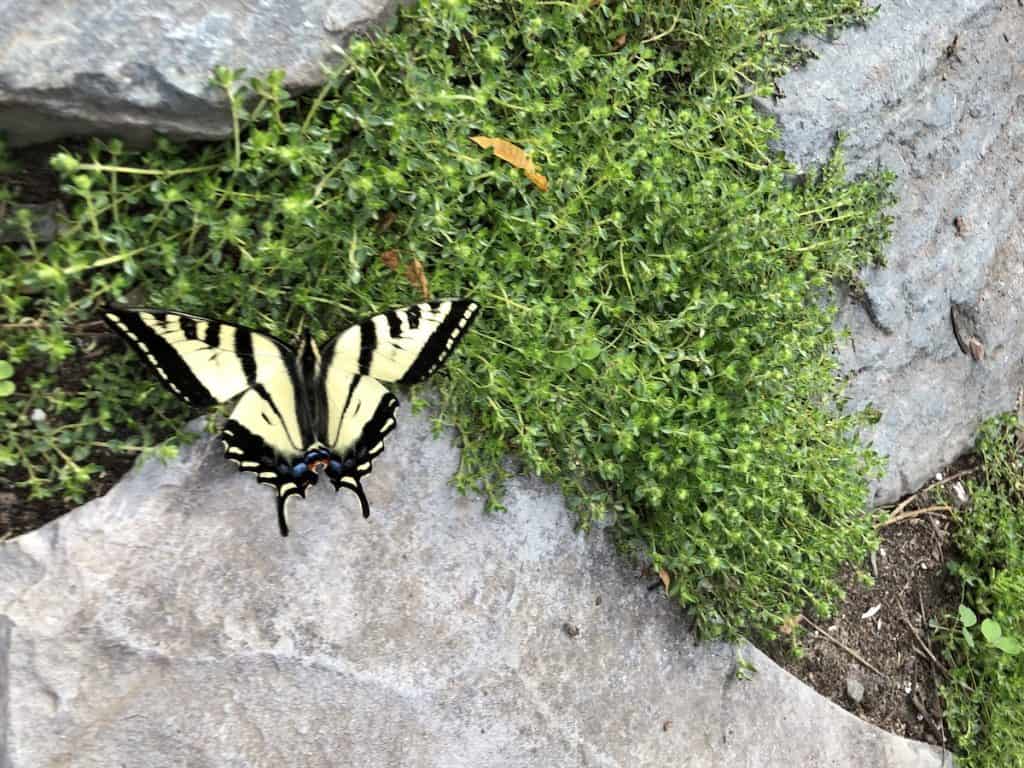
7. Grow beneficial bugs
Gardening isn’t just about plants! From the soil to the fungi and the microbes and insects, there is a lot going on in the garden beyond plant life. Create wildlife habitats for beneficial creatures by installing features like birdhouses and insect hotels. You can even order live bugs from local garden centers and teaching centers, including monarch caterpillar cocoons and packages of live ladybugs.
Here are some ideas for garden ecosystem education for preschoolers:
- Monarch caterpillar cocoons
- Live ladybugs
- Praying mantis
- Hummingbird feeders
- Birdhouses
- Bat houses
- Butterfly Bath
- Bird Baths
Be sure to keep an area of lawn for picnics and play where you can observe the little critters and creatures in their natural habitat.
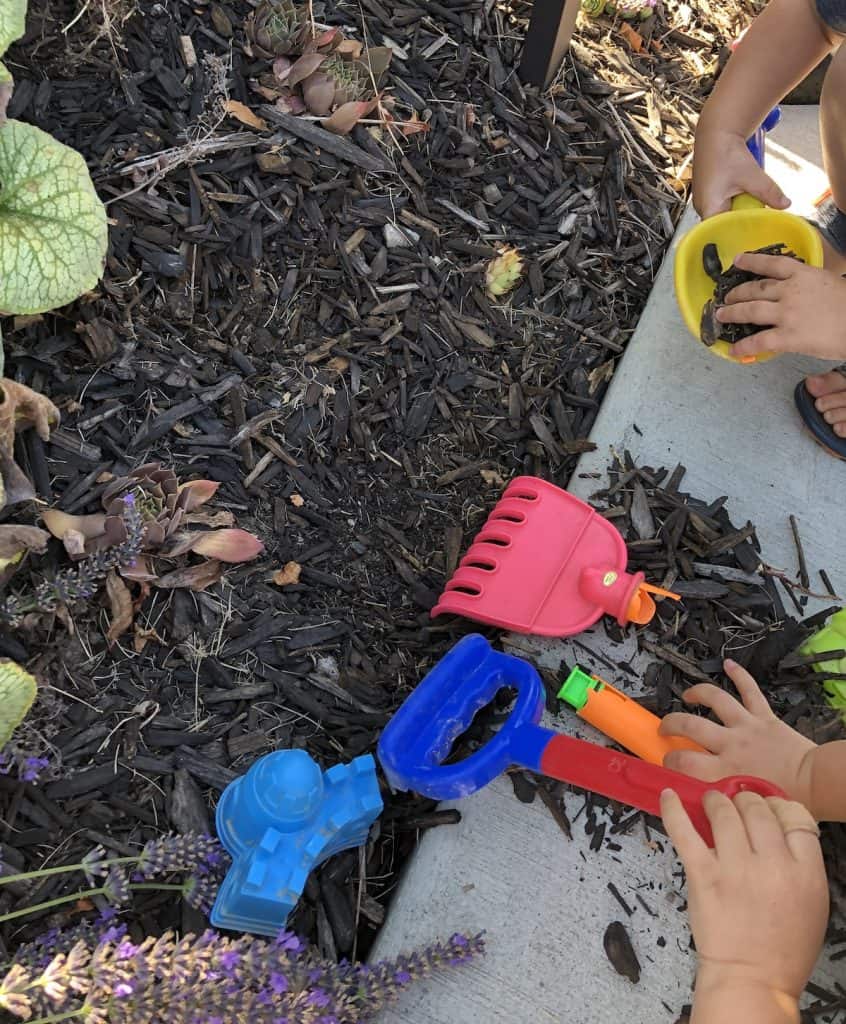
8. Unstructured play in the garden
A garden is a wonderful place for unstructured play. It is a place of discovery and self-directed learning that can keep children entertained for hours on end. One of the most rewarding garden themed educational activities for preschoolers is to simply give the kids their own gardening tools and let them dig in the dirt!
Cheap plastic tools tend to break easily, so it’s nice to invest in properly-made tools if possible. Here is a detailed guide to gardening tools for kids if you plan to invest in items beyond simple beach toys:
Further Info: Gardening Tools for Kids
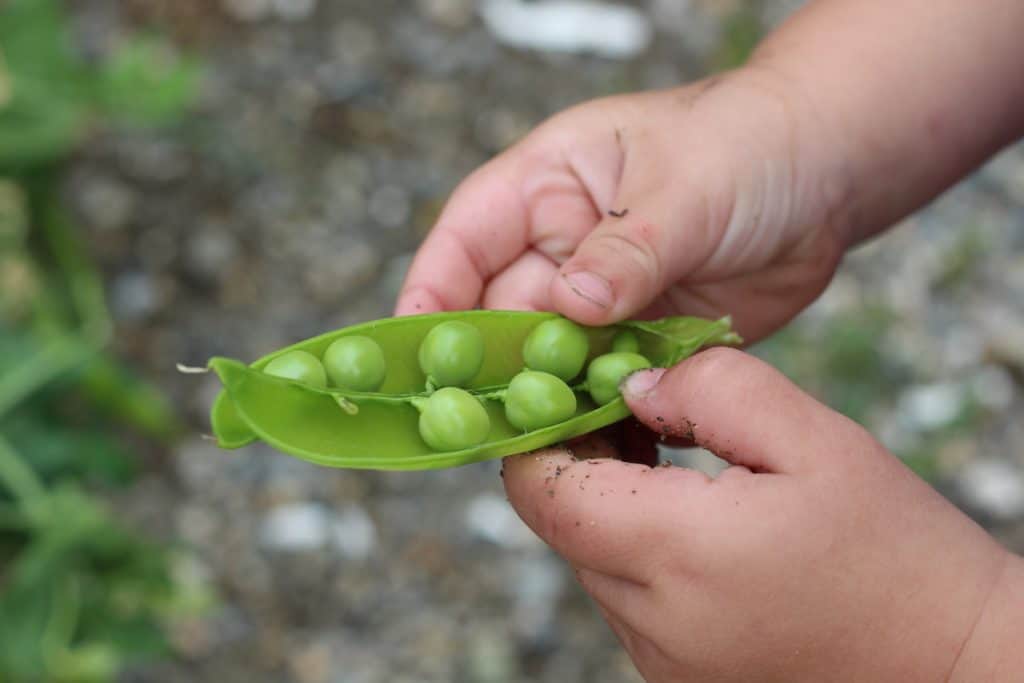
More tips for gardening with preschool-age children
These gardening activities for preschoolers can be expanded upon and altered to suit your type of garden, location, and age of children. Look for lessons in the garden, and encourage your kids to share what they learn with friends and grandparents.
Before gardening with kids, take precautions to ensure the area and surroundings are safe for children. This includes a lack of open water, tripping hazards, dangerous tools, poisonous plants, access to roadways, and other hazardous exposures. Procedures like forbidding eating plants without adults, ensuring fences have closing gates, making shady spots available (along with sun hats/sunscreen), and staying out of the sun when the rays are strongest are all important factors in gardening safety.
Provided it’s safe and inviting, the garden can be full of wonder and excitement for young children. Whether your kids love hiding behind large leaves, digging in the sandpit, or simply having their own veggie patch with no parental interference, you’re sure to establish a love of gardening and of plants in general. Get your muddy clothes out and let’s get gardening!


